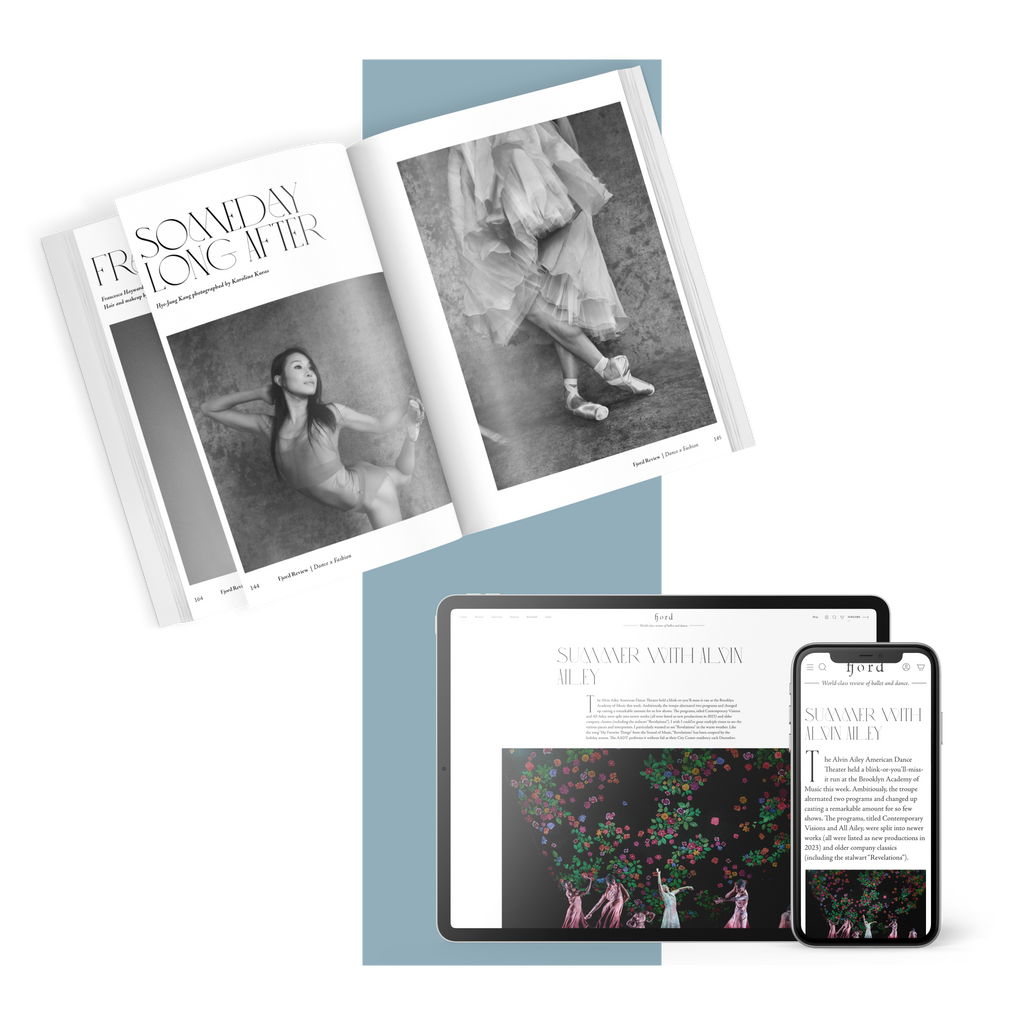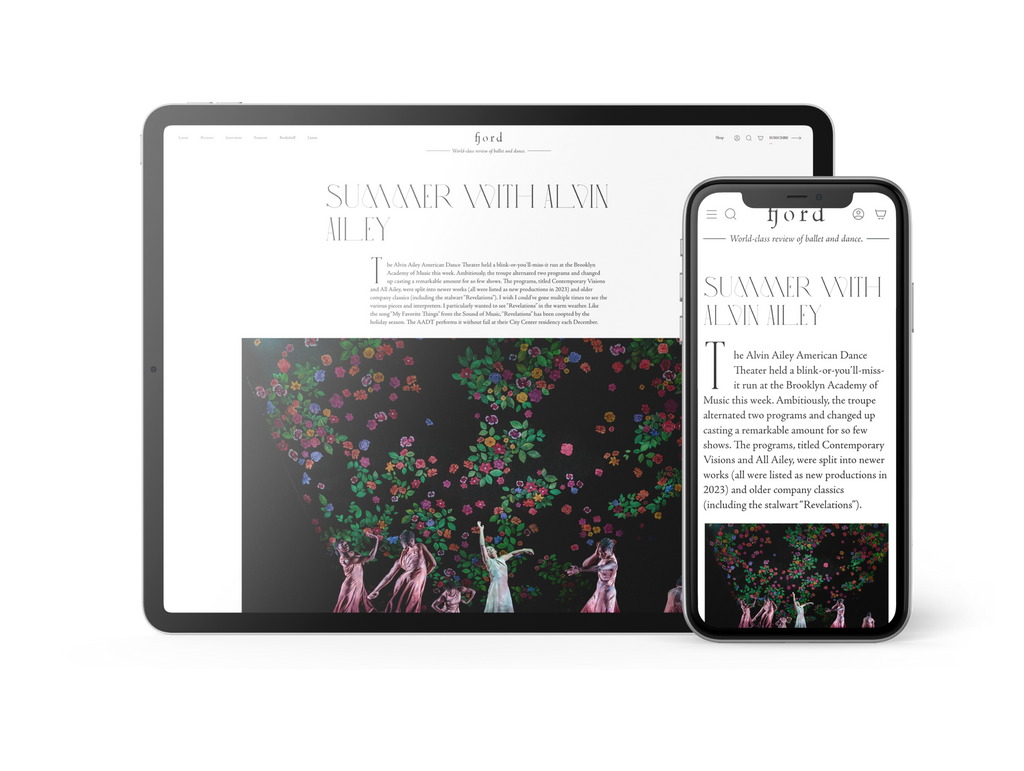Invisible Wounds
It was apropos that I attended choreographer Wanjiru Kamuyu’s latest work, “Fragmented Shadows,” just before Halloween.
Continue Reading
World-class review of ballet and dance.
The last time I saw Michelle Dorrance perform in person was in her breakthrough production of “Soundspace” (2013). I remember my view from the risers at the short end of St. Mark’s Church, where she had gathered what seemed surely every available tap and body percussion artist in NYC. I remember the generosity with which she showcased her fellow artists—and also, socks. Imagine rhythm tappers wearing socks! It was an experiment that both paid tribute to the tap great, Jimmy Slyde, and protected the wood floors of the historic building. That show raised Dorrance’s star. She had already been recognized with the Princess Grace award. But soon came the MacArthur Foundation Fellowship and a Jacobs Pillow residency. At the Joyce this week, I was happy to see both generosity and slide still in evidence—if not actual socks. This program of three premieres doesn’t so much break new ground as celebrate what has led to this moment. Dorrance both looks back in homage and pays it forward by opening a door for a new artist collaborator, musician and vocalist, Aaron Marcellus.
Performance
Place
Words

Claudia Rahardjanoto, Michelle Dorrance in ““45th & 8th.” Photograph by Steven Pisano


“Uncommonly intelligent, substantial coverage.”
Your weekly source for world-class dance reviews, interviews, articles, and more.
Already a paid subscriber? Login
It was apropos that I attended choreographer Wanjiru Kamuyu’s latest work, “Fragmented Shadows,” just before Halloween.
Continue ReadingMaking its long anticipated debut at Sadler’s Wells, “Figures in Extinction" is perhaps the brightest new feather in Nederland Dans Theater’s cap.
Continue ReadingThe final program of American Ballet Theatre’s fall season, titled “Innovations Past and Present,” featured the world premiere of Juliano Nunes “Have We Met!?” as well as two company gems: Alexei Ratmansky’s “Serenade after Plato’s Symposium” and George Balanchine’s “Theme and Variations.”
Continue ReadingMiriam Miller steps into the center and raises her arm with deliberation, pressing her palm upward to the vaulted Gothic ceiling of the cathedral.
Continue Reading
comments